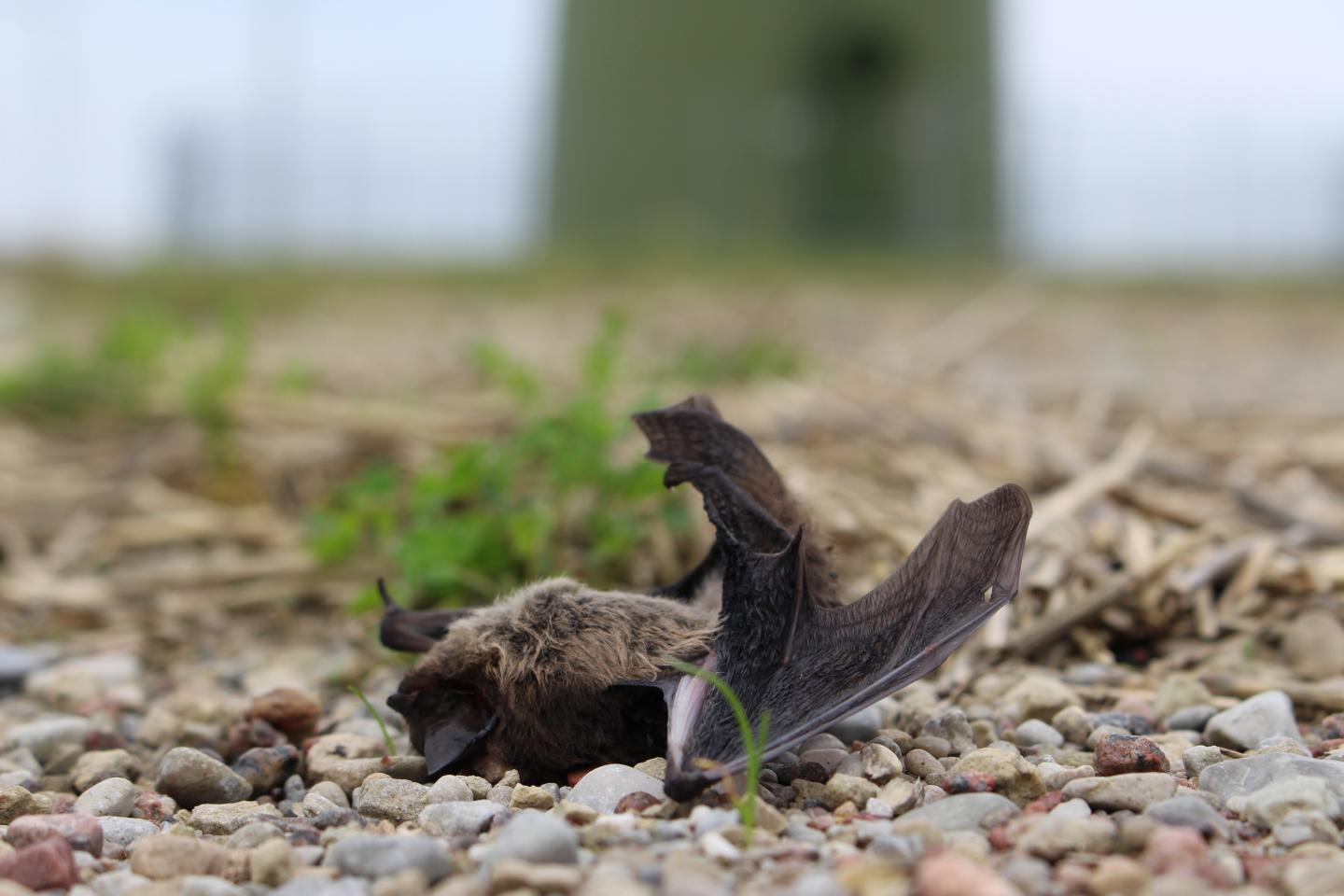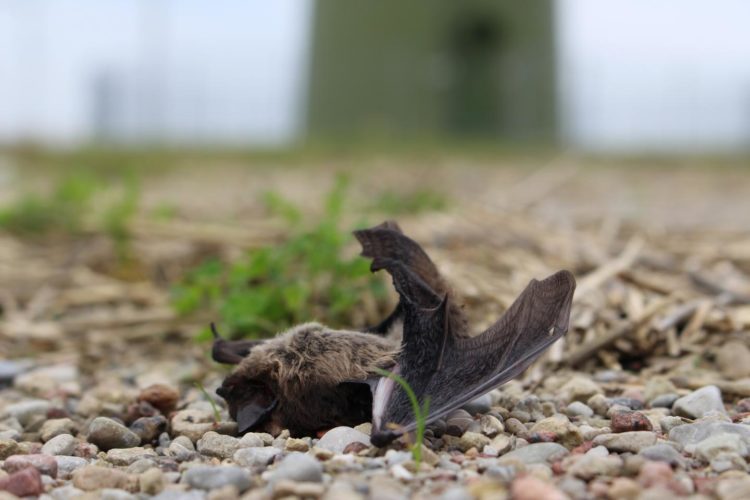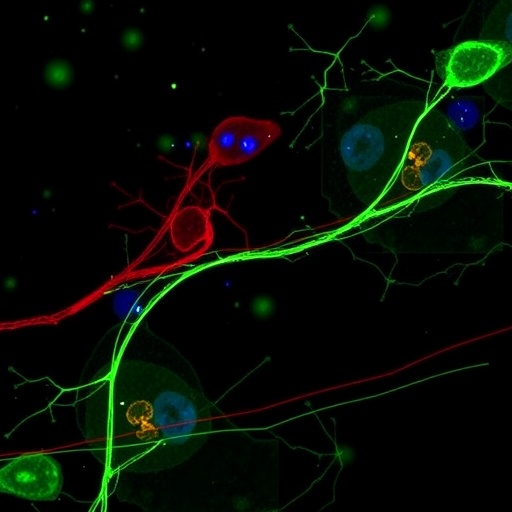How stakeholders evaluate the green-green dilemma — and what they think about possible solutions

Credit: Christian Voigt, Leibniz-IZW
The replacement of fossil and nuclear energy sources for electricity production by renewables such as wind, sun, water and biomass is a cornerstone of Germany’s energy policy. Amongst these, wind energy production is the most important component. However, energy production from wind is not necessarily ecologically sustainable. It requires relatively large spaces for installation and operation of turbines, and bats and birds die after collisions with rotors in significant numbers. For these reasons, the location and operation of wind energy plants are often in direct conflict with the legal protection of endangered species. The almost unanimous opinion of experts from local and central government authorities, environmental NGOs and expert offices is that the current mechanisms for the protection of bats in wind power projects are insufficient. This is one conclusion from a survey by the Leibniz Institute for Zoo and Wildlife Research (Leibniz-IZW) published in the “Journal of Renewable and Sustainable Energy“.
More than 500 representatives of various stakeholders (expert groups) involved in the environmental impact assessment of wind turbines took part in the Leibniz-IZW survey. This group included employees of conservation agencies and government authorities, representatives of non-governmental organisations in the conservation sector, consultants, employees of wind energy companies and scientists conducting research on renewable energies or on biodiversity. The survey focused on assessments on the contribution of wind energy to the transformation of the energy system, on ecologically sustainable installation and operation of wind turbines and on possible solutions for the trade-off between tackling climate change and protecting biological diversity.
“We found both significant discrepancies and broad consensus among participants,” states Christian Voigt, department head at Leibniz-IZW and first author of the survey. “The overwhelming majority of respondents confirmed that there is a direct conflict between green electricity and bat protection. Most importantly, they considered the protection of biodiversity to be just as important as the contribution to protect the global climate through renewable energy production.” Most stakeholders agreed that small to moderate losses in the yield of wind power plants in terms of electricity production and thus in financial terms instigated by the consistent application of conservation laws must become acceptable. Possible shutdown times in electricity production should be compensated. “We will probably have to accept a higher price of green electricity for the purpose of the effective protection of bats in order to compensate for the shutdown times of wind turbines,” Voigt sums up. “This does not address the unsolved issue of how to deal with habitat loss, especially when wind turbines are placed in forests.”
The conflict between wind power projects and the objectives of biological conservation intensified in recent years because the rapidly rising number of wind plants – there are now around 30,000 on mainland Germany – has made suitable locations scarce. As a result, new plants are increasingly erected in locations where conflicts with wildlife and the protection of wildlife are more likely, for example in forests. “According to members of conservation authorities, only about 25 % of wind turbines are operated under mitigation schemes such as temporary halt of wind turbine operation during periods of high bat activity (for example during the migration season), at relatively low wind speeds and at high air temperatures even though the legal framework that protects bats would require the enforcemnt of such measures,” adds author Marcus Fritze of Leibniz-IZW. In addition, it became clear from the survey that members of the wind energy industry hold views on some aspects of the green-green dilemma that differ from those of other expert groups. “Representatives of the wind energy industry consider compliance with climate protection targets as more important than measures to protect species. All other expert groups disagree with this notion,” said Fritze. “A consistent dialogue between all participants therefore seems particularly important in order to enable ecologically sustainable wind energy production.”
The survey also showed that
- more than 95% of respondents consider the transformation of the energy system (“Energiewende”) to be important,
- all expert groups agreed on aiming for an ecologically sustainable energy transition,
- two thirds of stakeholders in the wind energy industry shared the view that wind energy production should be promoted more strongly than energy production from other renewable sources whereas 85% of representatives from the other stakeholders disagreed with this,
- 86% of the survey participants outside the wind energy sector gave green electricity no higher priority than the protection of wildlife whereas only 4% of representatives of the wind sector industry shared this opinion (almost half were undecided or consider wind power to be more important than biodiversity protection).
For the purpose of this survey, the authors selected bats as a representative group of species for all wildlife affected by wind turbines, because large numbers of bats die at turbines and they enjoy a high level of protection both nationally and internationally, and therefore play an important role in planning and approval procedures for wind turbines. Indeed, the high collision rates of bats at wind turbines may be relevant to entire bat populations. The common noctule is the most frequent victim of wind turbines; this species is rated as declining by the Federal Agency for Nature Conservation in Germany. Furthermore, the results of years of research in the department headed by Voigt at the Leibniz-IZW show that the losses affect both local bat population as well as migrating individuals. Thus, fatalities at wind turbines in Germany affect bat populations in Germany as well as populations in other European regions from where these bats originate.
On the basis of the survey results, the authors argue in favour of a stronger consideration of nature conservation objectives in the wind energy industry and for an appreciation of the targets of the conservation of biological diversity. They suggest ways in which the cooperation of those involved in the planning and operation of wind power projects can be improved that both wind energy production and the goals of biological conservation can be satisfied.
###
Media Contact
Christian Voigt
[email protected]
49-305-168-511
Original Source
https:/
Related Journal Article
http://dx.





